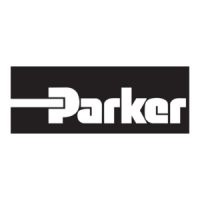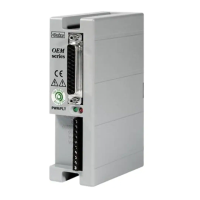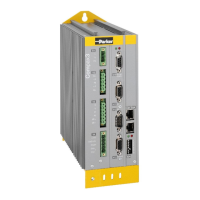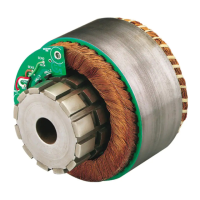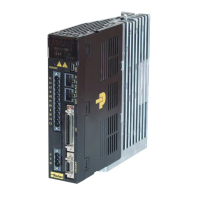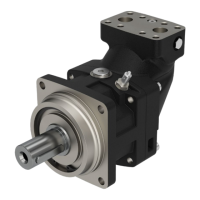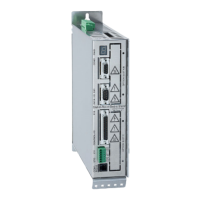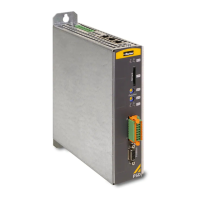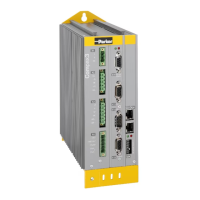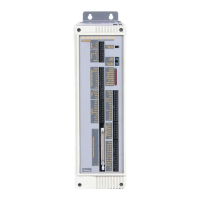Do you have a question about the Parker 590C and is the answer not in the manual?
Information about the manual's structure and intended audience.
Essential initial actions before equipment installation and operation.
Guidelines for checking equipment for transit damage and proper storage.
Details the different models within the 590 Series DC Digital Drive product line.
Explains the fundamental principles of operation and control loops.
Lists and describes key control, protection, and diagnostic features of the drive.
Overview of available option boards for speed feedback and communications.
Covers unpacking, lifting, mounting, and ventilation requirements for the drive.
Details wiring requirements, power connections, and control connections for safe installation.
Explains the procedures for connecting the main AC power supply and contactors.
Discusses the configuration options for internal and external motor field supplies.
Provides dimensional drawings and mounting details for different drive configurations.
Crucial checks to perform before applying power to ensure safety and correct operation.
Steps involved in configuring the drive, including calibration and initial setup.
A step-by-step guide to safely power up and commission the drive.
Procedures for tuning control loops, including Autotune features for optimal performance.
Explains various methods for starting, stopping, and controlling the drive's operation.
Explains the fundamental principles of current, speed, and field control loops.
Details the operation and parameters of the current control loop.
Describes the function and tuning of the speed loop for precise speed control.
Covers parameters and modes for controlling the motor's field excitation.
Overview of the Man-Machine Interface, its keys, display, and LEDs.
Describes the hierarchical structure of the MMI menus for parameter access.
Information on viewing diagnostic parameters for troubleshooting and monitoring.
Details on accessing and configuring all function block parameters for drive setup.
Parameters essential for configuring the drive's basic settings and operation.
Explanation of how the drive trips to protect itself and the associated drive indications.
A guide to identifying and resolving common drive problems and fault conditions.
Details on alarm messages displayed on the MMI and stored in the alarm status menu.
Recommendations for regular maintenance to ensure long life and continued usefulness.
Information on returning the unit for repair and saving application data.
Guidelines for the environmentally responsible disposal of product materials.
Details on using the main serial port for network communication and system control.
Information on the uses of the P3 port for PC communication and data transfer.
Information on the EI Bisynch ASCII communication protocol.
Overview of the regulatory market requirements and certifications for the drives.
Explanation of CE marking requirements related to electromagnetic compatibility.
Guidelines for proper installation to ensure EMC compliance, including earthing and cabling.
A detailed list of parameters organized by Tag Number with their properties.
A list of parameters organized by their MMI menu path for easy lookup.
Introduction to programming the drive, including using block diagrams and DSE Lite.
Detailed descriptions of individual function blocks used in drive programming.
Details on setting up and tuning the drive's current or torque control loop.
Information on tuning the speed loop PI controller for accurate speed control.
Parameters that define the deceleration rates for Normal Stop and Program Stop methods.
Comprehensive technical data for the 590 Series DC Digital Drive.
Specifications for operating temperature, humidity, altitude, and safety conditions.
Critical information on protective earthing requirements and input supply details.
Pin assignments and signal levels for all digital and analog I/O terminals.
Information on mounting orientation, blower throughput, weight, and terminal types.
Information about the manual's structure and intended audience.
Essential initial actions before equipment installation and operation.
Guidelines for checking equipment for transit damage and proper storage.
Details the different models within the 590 Series DC Digital Drive product line.
Explains the fundamental principles of operation and control loops.
Lists and describes key control, protection, and diagnostic features of the drive.
Overview of available option boards for speed feedback and communications.
Covers unpacking, lifting, mounting, and ventilation requirements for the drive.
Details wiring requirements, power connections, and control connections for safe installation.
Explains the procedures for connecting the main AC power supply and contactors.
Discusses the configuration options for internal and external motor field supplies.
Provides dimensional drawings and mounting details for different drive configurations.
Crucial checks to perform before applying power to ensure safety and correct operation.
Steps involved in configuring the drive, including calibration and initial setup.
A step-by-step guide to safely power up and commission the drive.
Procedures for tuning control loops, including Autotune features for optimal performance.
Explains various methods for starting, stopping, and controlling the drive's operation.
Explains the fundamental principles of current, speed, and field control loops.
Details the operation and parameters of the current control loop.
Describes the function and tuning of the speed loop for precise speed control.
Covers parameters and modes for controlling the motor's field excitation.
Overview of the Man-Machine Interface, its keys, display, and LEDs.
Describes the hierarchical structure of the MMI menus for parameter access.
Information on viewing diagnostic parameters for troubleshooting and monitoring.
Details on accessing and configuring all function block parameters for drive setup.
Parameters essential for configuring the drive's basic settings and operation.
Explanation of how the drive trips to protect itself and the associated drive indications.
A guide to identifying and resolving common drive problems and fault conditions.
Details on alarm messages displayed on the MMI and stored in the alarm status menu.
Recommendations for regular maintenance to ensure long life and continued usefulness.
Information on returning the unit for repair and saving application data.
Guidelines for the environmentally responsible disposal of product materials.
Details on using the main serial port for network communication and system control.
Information on the uses of the P3 port for PC communication and data transfer.
Information on the EI Bisynch ASCII communication protocol.
Overview of the regulatory market requirements and certifications for the drives.
Explanation of CE marking requirements related to electromagnetic compatibility.
Guidelines for proper installation to ensure EMC compliance, including earthing and cabling.
A detailed list of parameters organized by Tag Number with their properties.
A list of parameters organized by their MMI menu path for easy lookup.
Introduction to programming the drive, including using block diagrams and DSE Lite.
Detailed descriptions of individual function blocks used in drive programming.
Details on setting up and tuning the drive's current or torque control loop.
Information on tuning the speed loop PI controller for accurate speed control.
Parameters that define the deceleration rates for Normal Stop and Program Stop methods.
Comprehensive technical data for the 590 Series DC Digital Drive.
Specifications for operating temperature, humidity, altitude, and safety conditions.
Critical information on protective earthing requirements and input supply details.
Pin assignments and signal levels for all digital and analog I/O terminals.
Information on mounting orientation, blower throughput, weight, and terminal types.
| Brand | Parker |
|---|---|
| Model | 590C |
| Category | Servo Drives |
| Language | English |
